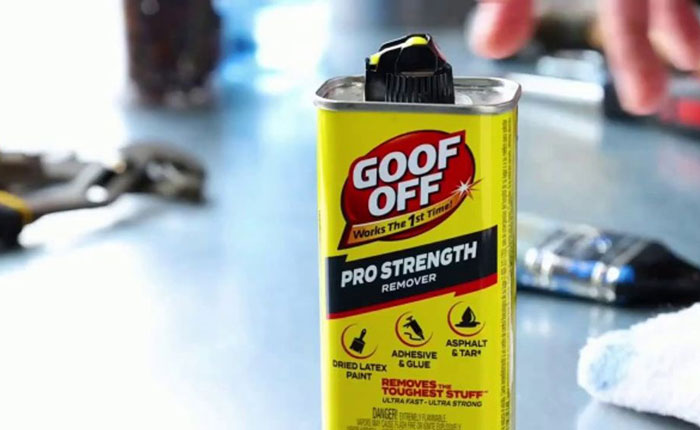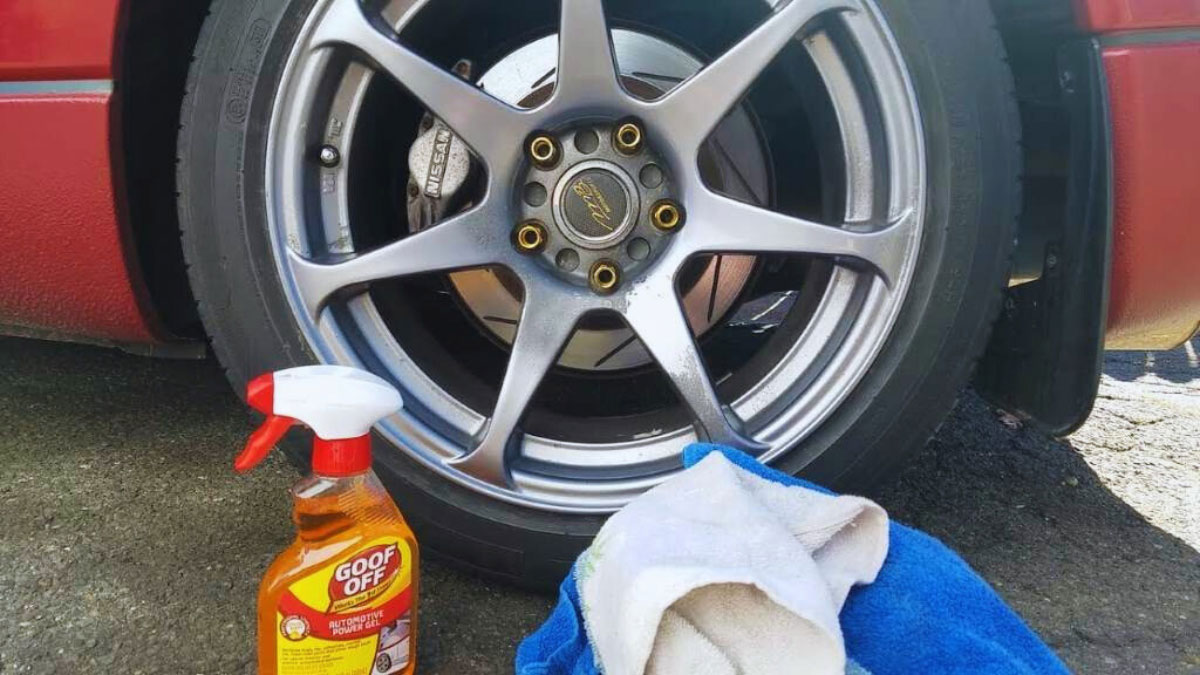Ever found yourself staring at stubborn tar, sap, or adhesive on your car’s paint and wondered if Goof Off could be the magic solution? You’re not alone. Many car owners grapple with the dilemma of whether this powerful cleaner is safe for their vehicle’s finish.
I’ve spent countless hours researching and testing various cleaning products, and Goof Off often comes up in discussions. While it promises to tackle tough stains, the real question is whether it does so without damaging that precious paint job. Let’s jump into the nitty-gritty of using Goof Off on car paint and uncover the truth behind its safety and effectiveness.
What Is Goof Off?
Goof Off is a popular cleaning product known for its power to remove tough stains, adhesives, and residues from various surfaces, including car paint. Its effectiveness has made it a go-to solution for many car owners dealing with persistent blemishes.

Composition And Properties
Goof Off contains a robust blend of chemicals designed to break down stubborn substances. Its active components include:
- Xylene: A solvent that breaks down adhesives, paints, and stains.
- Ethylbenzene: Enhances solvency and effectiveness on greases and tars.
- Acetone: Known for quick evaporation, leaves surfaces clean without residue.
These chemical properties make Goof Off versatile and potent in cleaning various contaminants from automotive paint.
Common Uses
Car owners often turn to Goof Off for a range of cleaning tasks. Some common uses include:
- Removal of Adhesive Residue: Easily eliminates stickers, decals, and tape residues.
- Tar and Sap Stain Cleaning: Effective against tree sap, tar, and similar stubborn stains.
- Grease and Oily Stains: Cuts through grease and oil from road grime.
Goof Off is valued for its effectiveness in tackling these specific issues, making it a handy product for maintaining a car’s appearance.
Risks To Car Paint
Understanding the potential risks of using Goof Off on car paint is crucial for maintaining your vehicle’s appearance. Goof Off can effectively remove tough stains, but it can also harm car paint if not used correctly.
Potential For Damage
Goof Off contains strong solvents like xylene and acetone. These solvents can:
- Remove Paint Layers: They may strip away layers of your car’s paint, especially if left on for too long.
- Cause Discoloration: They can lead to discoloration or fading of the paint.
- Weaken Clear Coat: The solvents can degrade the clear coat, making the paint look dull and increasing vulnerability to further damage.
Types Of Paint Affected
Different types of car paint react differently to Goof Off.
Acrylic Paint: Highly sensitive to strong solvents; can easily suffer wear and tear.
Enamel Paint: More resistant but still susceptible to prolonged solvent exposure.
Urethane Base Coat/Clear Coat: While durable, it can experience clear coat weakening and color fading if exposed too long.
Precautions To Take
To mitigate risks:
- Test A Small Area: Always test Goof Off on a hidden area of the car paint first.
- Use Sparingly: Apply a minimal amount and immediately wipe off.
- Avoid Prolonged Exposure: Do not let the product sit on the paint for extended periods.
- Rinse Thoroughly: Always wash the area with soap and water after using Goof Off.
By understanding the potential risks and taking appropriate precautions, you can use Goof Off more safely on your car paint.
Safe Application Techniques
Using Goof Off on car paint requires careful consideration and specific techniques to avoid damage. Understanding and following these techniques ensures the safe use of Goof Off while maintaining your car’s paint integrity.
Surface Testing
Before applying Goof Off across a larger area, always conduct a surface test.
- Select a Small Area: Choose an inconspicuous spot on the car’s body.
- Apply a Small Amount: Use a cotton swab to apply a minute quantity of Goof Off.
- Wait and Observe: Allow it to sit for a few minutes, then check for any adverse reactions, such as discoloration or paint lifting.
Application Steps
Adhering to precise application steps minimizes risks.
- Clean the Surface: Ensure the area is free from dirt or debris.
- Use Protective Gear: Always wear gloves to protect your skin.
- Apply Sparingly: Dab a small quantity of Goof Off on a clean, soft cloth.
- Rub Gently: Lightly rub the targeted area, avoiding excessive pressure.
- Short Exposure: Limit the contact time to a few seconds, reducing the risk of paint damage.
- Immediate Rinse: Quickly rinse the area with water to remove residues.
Aftercare and Cleaning
After using Goof Off, performing thorough aftercare is crucial.
- Rinse Thoroughly: Use running water to wash off any remaining solvent.
- Dry the Area: Pat dry with a clean, soft towel.
- Inspect for Residue: Examine the area to ensure all Goof Off has been removed.
- Apply Wax: Consider applying a protective wax to restore the car’s clear coat.
These steps help mitigate the potential risks associated with using Goof Off on car paint, protecting your vehicle’s finish effectively.
Alternatives To Goof Off
When looking for safer options to clean your car paint, there are several alternatives to Goof Off. Each choice comes with its own benefits and applications.
Safer Cleaning Agents
Safer cleaning agents protect your car’s finish while effectively removing stains or residues.
- Meguiar’s Ultimate Compound: This product removes oxidation, stains, and light scratches. It’s safe for use on clear coats and doesn’t cause discoloration.
- 3M Adhesive Remover: Known for removing adhesive residue, sticker glue, and tar without damaging car paint. It’s less aggressive than Goof Off and has a more balanced chemical composition.
- Griot’s Garage Bug and Smudge Remover: Excellent for dissolving bug splatter, tar, and bird droppings. It’s formulated to be gentle on car paint while tough on stains.
DIY Solutions
Using household items as DIY solutions can also yield effective results without harming the car’s paint. These solutions are usually readily available and easy to apply.
- White Vinegar and Water: Mixing equal parts white vinegar and water creates a mild cleaning solution. Apply using a soft cloth to gently remove minor stains. Avoid using this solution on older, less durable paint finishes.
- Baking Soda Paste: A paste made from baking soda and water can remove tough stains and bird droppings. Apply the paste, let it sit for a few minutes, then gently scrub with a soft cloth.
- Rubbing Alcohol: Dilute rubbing alcohol with water (ratio 1:1) to remove adhesive residue and tar. It’s essential to rinse the area well afterward to prevent alcohol from dehydrating the paint.
Avoid complex jargon and oversimplification, striking a balance between technical accuracy and reader accessibility.
Conclusion
While Goof Off can be highly effective in removing tough stains and residues from car paint it’s not without risks. Paint damage and discoloration are real concerns. For those looking for safer alternatives Meguiar’s Ultimate Compound 3M Adhesive Remover and Griot’s Garage Bug and Smudge Remover are excellent options. DIY solutions like white vinegar and water baking soda paste and diluted rubbing alcohol also offer gentle yet effective cleaning.
Choosing the right product depends on your specific needs and comfort level with potential risks. Always test any cleaner on a small inconspicuous area first to ensure it won’t harm your car’s paint. With the right approach you can keep your car looking pristine without compromising its finish.
Frequently Asked Questions
Can Goof Off damage car paint?
Yes, Goof Off can potentially damage car paint. It is strong and may cause discoloration or remove paint if not used carefully.
What are some safer alternatives to Goof Off for cars?
Safer alternatives include Meguiar’s Ultimate Compound, 3M Adhesive Remover, and Griot’s Garage Bug and Smudge Remover. These are effective yet gentle on car paint.
Can DIY solutions be used to clean car paint?
Yes, DIY solutions like white vinegar and water, baking soda paste, and diluted rubbing alcohol can effectively clean car paint without causing damage.
How do I remove adhesive residue from my car without damaging the paint?
You can use 3M Adhesive Remover or a mixture of white vinegar and water. These options are gentle on car paint and effective at removing adhesive residue.
Is it safe to use baking soda paste on car paint?
Yes, baking soda paste is a safe DIY solution for cleaning car paint. It effectively removes tough stains without causing damage.

